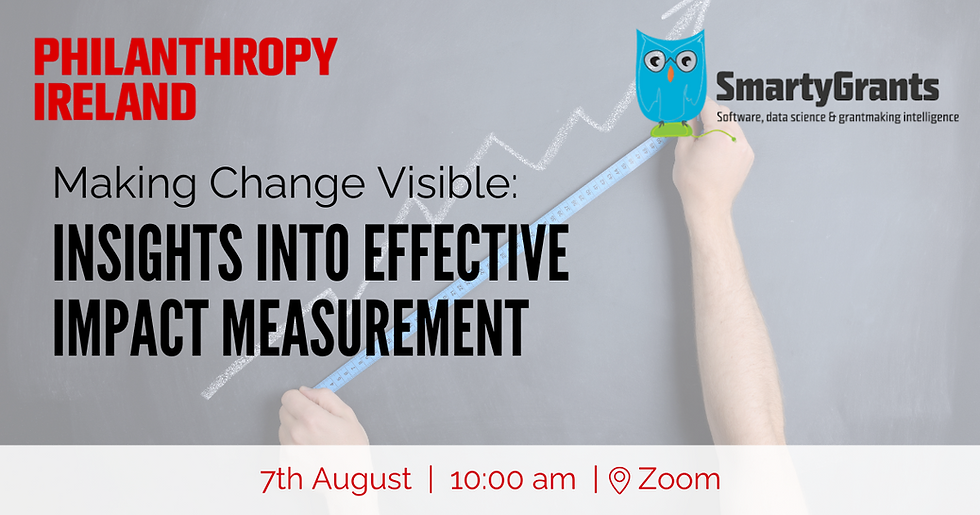Enhancing Risk Assessment and Management Practices in Grantmaking
- May 16, 2024
- 3 min read
Updated: Jul 14
By: Hazel Hennessy, Philanthropy Ireland

In the world of philanthropy, the ability to effectively assess and manage risks is crucial for making informed decisions when it comes to grant-making. Recently Philanthropy Ireland hosted a Grant Makers Network event to support members by providing insights and practical guidance on how funders can navigate the complexities of risk in funding practice. In this article, we will delve deeper into the key concepts discussed at the event and from research produced by IVAR and provide recommendations for Philanthropy Ireland members to enhance their risk assessment and management practices.
Understanding Risk in Philanthropic Grantmaking
Risk is inherent in any grant, project, or enterprise, and cannot be completely avoided. It can come in various forms, including financial risk, reputational risk, governance risk, and impact risk. By acknowledging and understanding these different dimensions of risk, funders can make more informed decisions and better support their grantees.
Developing a Common Framework for Risk Assessment
One of the key challenges is the lack of a shared understanding of what risk means in the context of grantmaking. To address this challenge, funders should work towards developing a common framework for assessing risk. This framework should take into account the likelihood of potential consequences and the impact of different types of risks on the funder and the grantee, while also taking time to fully understand the risk appetite of decision makers in the organisation.
Challenging Bias and Distinguishing Objective and Subjective Risk
Another important aspect or risk assessment is the need to distinguish between objective and subjective risk. Funders should aim to separate their biases and comfort levels from the objective reality of risk to make more accurate risk assessments. By challenging bias and approaching risk assessment with an open mind, funders can make fair and balanced decisions that benefit their grantees.
Unpacking the Parameters of Risk in Grantmaking
Risk in grantmaking is multi-dimensional and funders need to consider various factors such as fraud, waste of funds, and impact delivery. Philanthropy Ireland members should carefully unpack these parameters of risk and establish a clear organizational position on each type of risk to ensure consistency and alignment in their grant-making practices. Similarly, it is important to look at risk along a spectrum of an organisations grantmaking, as risk appetite and perameters can change depending on grant programmes, the type of organisation recieving funding (e.g. individual social entrepreneur, long established charity or start-up) and levels of investment.
Practical Steps for Enhancing Risk Assessment and Management
To enhance their risk assessment and management practices, grant makers can consider the following practical steps:
Establish a clear risk culture: work towards aligning board, staff, and grantmaking practices to ensure a coherent approach to risk. Clear communication of risk culture and explicit specification of risk factors can help build a strong foundation for risk assessment and management.
Implement risk management practices: take proactive steps to identify, evaluate, and prioritise risks, minimise the likelihood of risks, develop contingency plans, and actively monitor risks. By integrating risk management practices into their grantmaking processes, funders can enhance their ability to make informed decisions and support their grantees effectively.
Foster a culture of learning: Continuous learning and improvement are essential in enhancing risk assessment and management practices. Funders should actively seek feedback, monitor the outcomes of their grantmaking decisions, and reflect on their risk management strategies to identify areas for improvement and innovation.
Embracing a culture of openness, trust, and continuous learning will be key to success in navigating the complexities of risk in philanthropic grantmaking.





Comments